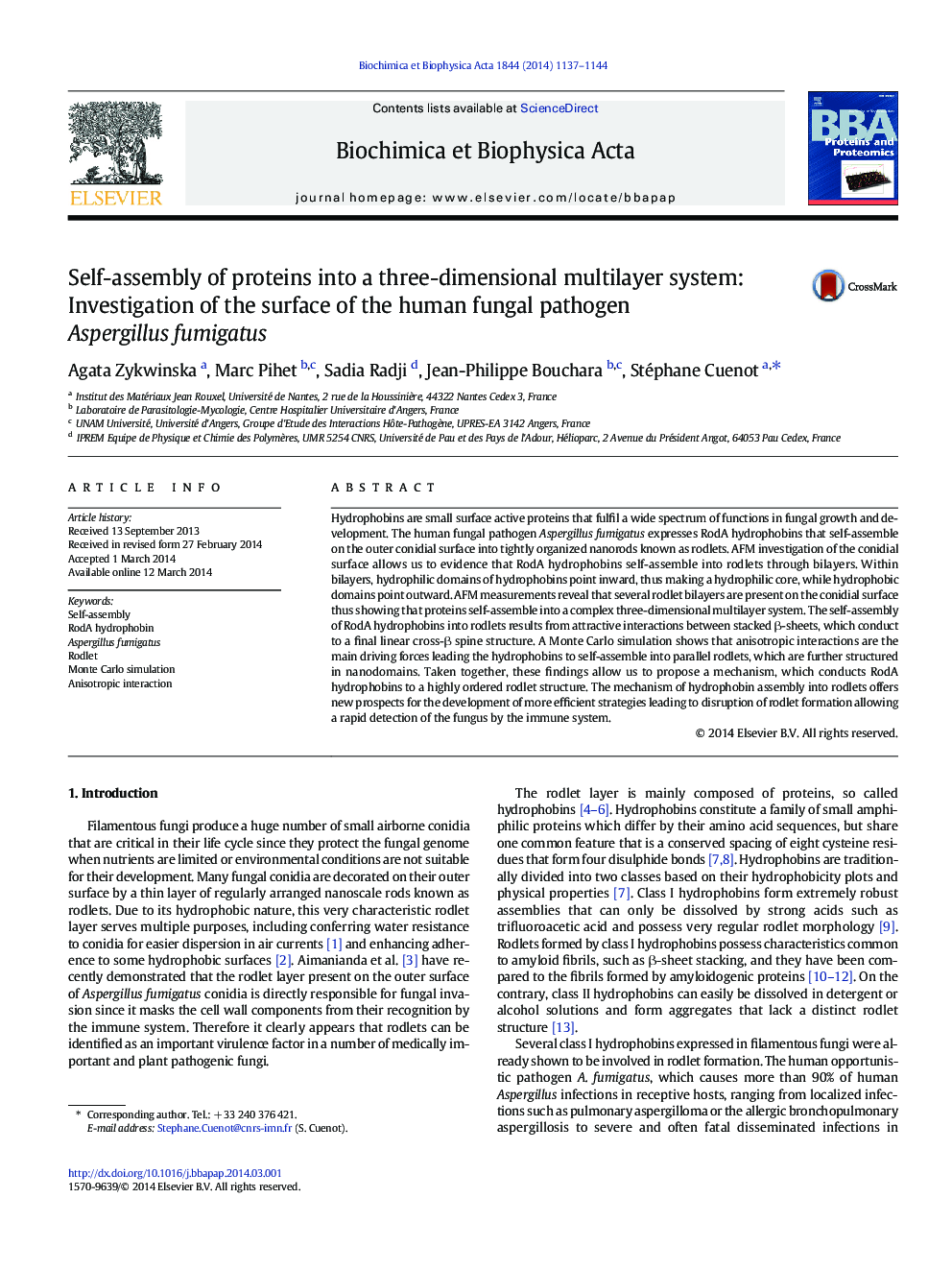| Article ID | Journal | Published Year | Pages | File Type |
|---|---|---|---|---|
| 1179627 | Biochimica et Biophysica Acta (BBA) - Proteins and Proteomics | 2014 | 8 Pages |
•The surface of the human fungal pathogen Aspergillus fumigatus was investigated by AFM.•A mechanism of the self-assembly of proteins into a three-dimensional multilayers system is proposed.•Proteins self-assemble into rodlets through bilayers.•We model the self-assembly of proteins into nanodomains of rodlets by a Monte Carlo simulation.
Hydrophobins are small surface active proteins that fulfil a wide spectrum of functions in fungal growth and development. The human fungal pathogen Aspergillus fumigatus expresses RodA hydrophobins that self-assemble on the outer conidial surface into tightly organized nanorods known as rodlets. AFM investigation of the conidial surface allows us to evidence that RodA hydrophobins self-assemble into rodlets through bilayers. Within bilayers, hydrophilic domains of hydrophobins point inward, thus making a hydrophilic core, while hydrophobic domains point outward. AFM measurements reveal that several rodlet bilayers are present on the conidial surface thus showing that proteins self-assemble into a complex three-dimensional multilayer system. The self-assembly of RodA hydrophobins into rodlets results from attractive interactions between stacked β-sheets, which conduct to a final linear cross-β spine structure. A Monte Carlo simulation shows that anisotropic interactions are the main driving forces leading the hydrophobins to self-assemble into parallel rodlets, which are further structured in nanodomains. Taken together, these findings allow us to propose a mechanism, which conducts RodA hydrophobins to a highly ordered rodlet structure. The mechanism of hydrophobin assembly into rodlets offers new prospects for the development of more efficient strategies leading to disruption of rodlet formation allowing a rapid detection of the fungus by the immune system.
Graphical abstractFigure optionsDownload full-size imageDownload high-quality image (411 K)Download as PowerPoint slide
